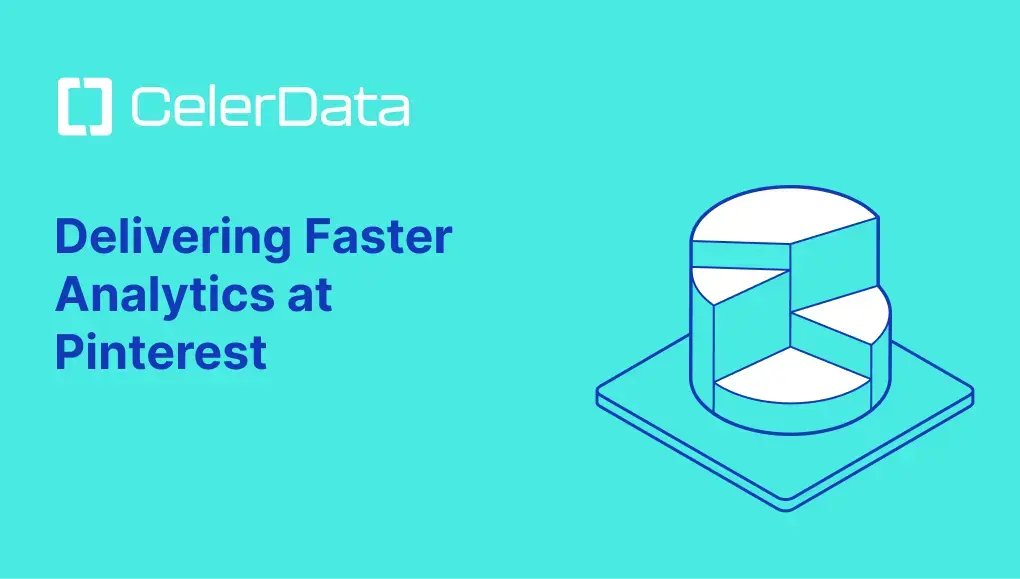
Unlocking the Benefits of Data Discovery: A Step-by-Step Guide

Join StarRocks Community on Slack
Connect on SlackWhat is Data Discovery and Why Is It Essential for Investors?
Definition of Data Discovery
Data Discovery is a powerful tool that helps you locate, understand, and utilize relevant data. This process involves exploring, classifying, and analyzing data from various sources to uncover patterns and insights. By transforming raw data into meaningful information, you can make informed decisions and drive business success.
Explanation of the Data Discovery Process
The process of data discovery begins with identifying and gathering data from multiple sources. You then clean and organize this data to ensure its quality. Next, you analyze the data using various techniques and tools to extract valuable insights. Finally, you present these insights in a visual format, making them accessible to non-technical users. This cyclical and iterative process allows you to continuously refine your understanding of the data.
Key Components of Data Discovery
Data Discovery comprises several key components:
-
Data Collection: Identifying and gathering data from diverse sources.
-
Data Preparation: Cleaning and organizing data to ensure its quality.
-
Data Analysis: Using techniques and tools to extract insights.
-
Data Visualization: Presenting insights in a visual format for easy understanding.
These components work together to help you uncover hidden patterns and trends, identify opportunities, and mitigate risks.
Importance of Data Discovery
Data Discovery plays a crucial role in today's data-driven world. It empowers you to make informed decisions by providing valuable insights from vast amounts of data. This process is essential for businesses looking to gain a competitive edge and optimize their operations.
Role in Decision-Making
Data Discovery enables you to make better decisions by providing a clear understanding of the data. By uncovering hidden patterns and trends, you can identify opportunities and mitigate risks. This process helps you make informed choices that drive business success.
Impact on Business Strategies
Incorporating Data Discovery into your business strategies can lead to significant improvements. By leveraging the insights gained from this process, you can develop new products and services, optimize data use, and protect data from risk. This approach not only enhances operational efficiency but also helps you maintain compliance and improve data quality.
The Data Discovery Process: A Step-by-Step Approach
Embarking on the journey of data discovery involves a structured approach. This process ensures you extract maximum value from your data. Let's delve into each step of this transformative process.
Step 1: Data Collection
Data collection marks the beginning of your discovery journey. You start by identifying data sources. These sources can be diverse, ranging from internal databases to external datasets. Recognizing the right sources is crucial for gathering relevant data. Once identified, you gather data meticulously. This step lays the foundation for effective data discovery.
Step 2: Data Preparation
After collecting data, you move to data preparation. This step involves cleaning and organizing data. You remove inconsistencies and errors to ensure data quality. Proper organization makes data ready for analysis. Ensuring data quality is vital. It enhances the reliability of insights derived from the discovery process.
Step 3: Data Analysis
Data analysis is where the magic happens. You apply various techniques to uncover insights. Techniques like statistical analysis and machine learning help in extracting valuable information. Tools for data analysis play a significant role. They simplify complex tasks and make analysis more efficient. By leveraging these tools, you can perform smart data discovery. This approach allows you to handle both structured and unstructured data discovery effectively.
The process of data discovery is iterative. You continuously refine your approach to gain deeper insights. This cyclical nature ensures you stay ahead in the data-driven world. Embrace this process to unlock the full potential of your data.
Step 4: Data Visualization
Data visualization transforms complex data into understandable visuals. This step is crucial in the automated data discovery process. You present data insights in a way that is easy to grasp. Visuals like charts, graphs, and dashboards make data accessible to everyone, even those without technical expertise.
Presenting Data Insights
Presenting data insights effectively requires careful consideration. You need to choose the right type of visualization for your data. For example, use bar charts to compare quantities or line graphs to show trends over time. The goal is to convey information clearly and concisely. Automated data discovery tools can help you create these visuals quickly. They offer templates and suggestions based on your data type. This automation saves time and ensures accuracy.
Tools for Data Visualization
Several tools can assist you in visualizing data. These automated data discovery tools simplify the process. They allow you to focus on interpreting the data rather than creating visuals from scratch. Popular tools include Tableau, Power BI, and Google Data Studio. Each tool offers unique features. Tableau is known for its interactive dashboards. Power BI integrates well with Microsoft products. Google Data Studio is great for collaboration. Choose a tool that fits your needs and enhances your ability to utilize data discovery.
Automated data discovery tools also support the automated data discovery process. They streamline data collection, preparation, and visualization. This integration ensures a seamless workflow. By utilizing these tools, you can unlock the full potential of your data. You gain insights faster and make informed decisions with confidence.
Practical Applications and Use Cases
Data discovery is not just a theoretical concept; it has practical applications across various industries. By understanding how different sectors utilize the data discovery process, you can appreciate its transformative power.
Use Cases in Various Industries
Healthcare
In healthcare, the data discovery process plays a pivotal role. You can use it to analyze patient data, leading to improved diagnosis and treatment plans. By uncovering patterns in patient records, healthcare providers can predict disease outbreaks and personalize patient care. This approach enhances patient outcomes and operational efficiency.
Finance
The finance industry relies heavily on the data discovery process for risk management and fraud detection. By analyzing transaction data, you can identify suspicious activities and mitigate risks. Financial institutions use data discovery to optimize investment strategies and improve customer service. This process helps you make informed decisions that drive business success.
Retail
In retail, the data discovery process helps you understand customer behavior and preferences. By analyzing sales data, you can identify trends and tailor marketing strategies accordingly. Retailers use data discovery to optimize inventory management and enhance customer experience. This approach leads to increased sales and customer satisfaction.
Benefits of Implementing Data Discovery
Implementing the data discovery process offers numerous benefits that can transform your business operations.
Improved Decision-Making
The data discovery process empowers you to make better decisions by providing valuable insights. By analyzing data, you can uncover hidden patterns and trends that inform your choices. This process enables you to identify opportunities and mitigate risks, leading to more strategic decision-making.
Enhanced Operational Efficiency
By utilizing the data discovery process, you can streamline your operations. Analyzing data helps you identify inefficiencies and areas for improvement. This process allows you to optimize resource allocation and improve productivity. As a result, your business becomes more agile and competitive.
The data discovery process is essential for businesses across various sectors. By embracing this approach, you can unlock the full potential of your data and gain a competitive edge. Whether you're in healthcare, finance, or retail, the benefits of data discovery are clear. Implementing this process can lead to improved decision-making and enhanced operational efficiency, ultimately driving your business forward.
Tools and Best Practices for Data Discovery
In the realm of data discovery, selecting the right tools and adhering to best practices can significantly enhance your ability to extract valuable insights. This section will guide you through popular data discovery tools and effective practices to ensure successful data exploration.
Popular Data Discovery Tools
Data discovery tools play a pivotal role in helping you locate, understand, and utilize relevant data. These tools streamline the process of identifying patterns and insights, making them indispensable in various industries.
Features and Functionalities
-
User-Friendly Interface: Most data discovery tools offer intuitive interfaces that allow you to navigate and analyze data effortlessly. This feature is crucial for users who may not have a technical background.
-
Advanced Analytics: These tools often come equipped with advanced analytics capabilities, enabling you to perform complex data analysis with ease. Techniques such as machine learning and statistical analysis are commonly integrated.
-
Data Visualization: Effective data discovery tools provide robust visualization options. You can transform raw data into charts, graphs, and dashboards, making insights accessible to all stakeholders.
-
Integration Capabilities: Many tools can seamlessly integrate with existing systems and databases, allowing you to unify scattered data sources. This integration is particularly beneficial in sectors like healthcare, where data is often fragmented.
Comparison of Tools
When choosing a data discovery tool, consider the following:
-
Tableau: Known for its interactive dashboards, Tableau excels in data visualization. It is ideal for users who prioritize visual storytelling.
-
Power BI: This tool integrates well with Microsoft products, making it a great choice for organizations already using Microsoft services. It offers comprehensive analytics and reporting features.
-
Google Data Studio: Perfect for collaboration, Google Data Studio allows multiple users to work on data projects simultaneously. It is user-friendly and offers a range of templates for quick visualization.
Each tool has unique strengths. Your choice should align with your specific needs and the nature of your data discovery techniques.
Best Practices for Effective Data Discovery
To maximize the benefits of data discovery, you must follow best practices that ensure data security and accuracy.
Ensuring Data Security
-
Access Control: Implement strict access controls to protect sensitive data. Only authorized personnel should have access to critical information.
-
Data Encryption: Use encryption to safeguard data both in transit and at rest. This practice prevents unauthorized access and ensures data integrity.
-
Regular Audits: Conduct regular audits to identify potential security vulnerabilities. This proactive approach helps you address issues before they escalate.
Maintaining Data Accuracy
-
Data Validation: Regularly validate data to ensure its accuracy. This step involves checking for errors and inconsistencies that could skew analysis results.
-
Consistent Updates: Keep your data updated consistently. Outdated information can lead to incorrect conclusions and poor decision-making.
-
Quality Assurance: Implement quality assurance processes to maintain high data standards. This practice involves routine checks and balances to ensure data reliability.
By adhering to these best practices, you can enhance the effectiveness of your data discovery techniques. This approach not only improves decision-making but also empowers you to unlock the full potential of your data.
Conclusion
Data discovery holds immense importance in today's data-driven world. It empowers you to make informed decisions and optimize operations. The discovery process, from data preparation to visualization, unlocks valuable insights. Implementing these practices can transform your business, enhancing efficiency and competitiveness. As technology evolves, the discovery process will become even more integral to success. Embrace data discovery to stay ahead and harness its full potential. This journey begins with effective data preparation and continues through a structured discovery process, ensuring you extract maximum value from your data.


.jpg)
